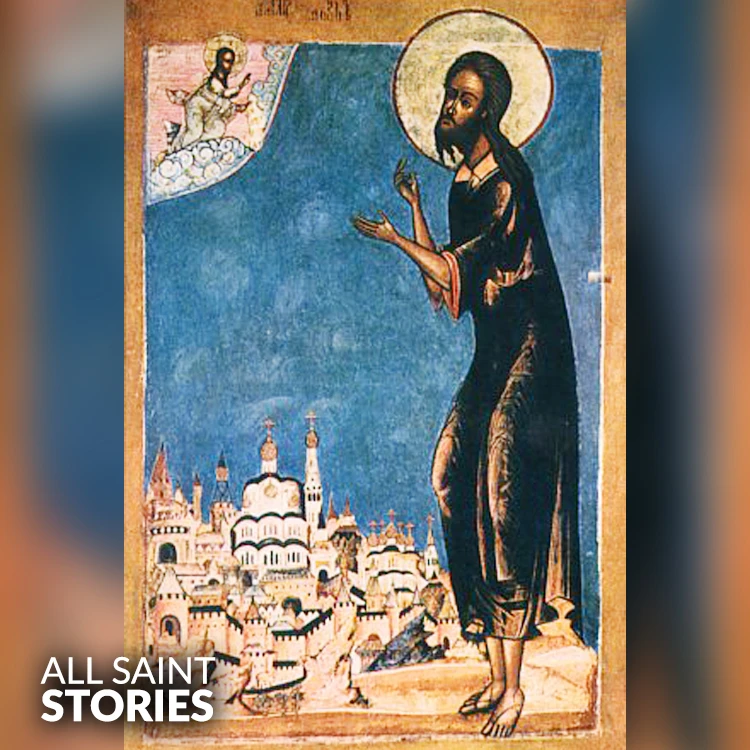
Saint Alexius of Rome was a nobleman who chose to live a life of extreme poverty and humility, renouncing his wealth and family to dedicate his life to God. His feast day is celebrated on July 17.
Syriac adaptation
As per Syriac custom, St. Alexius was an Eastern holy person whose reverence was subsequently relocated to Rome. The movement of the reverence to Rome was worked with by the conviction that the holy person was a local of Rome and had passed on there. This Roman association originated from a previous Syriac legend, which described that, during the episcopate of Diocesan Rabbula (412-435), a "Godly man", who lived in Edessa, Mesopotamia as a bum and shared the donations he got with other needy individuals, was viewed as a local of Rome after his passing.
Greek form
The Wedding of Holy person Alexius; Garcia Fernandes, 1541.
The Greek form of his legend made Alexius the main child of Euphemianus, a well off Christian Roman of the senatorial class. Alexius escaped his organized union with follow his heavenly business. Camouflaged as a transient, he resided close to Edessa in Syria, tolerating charity even from his own family slaves, who had been shipped off search for him; they didn't remember him until a supernatural symbol of the Favored Virgin Mary (later this picture was called Madonna of St Alexius) singled him out as a "Godly man" (Greek: Ἄνθρωπος τοῦ Θεοῦ).
Escaping the resultant reputation, he got back to Rome, so changed that his folks didn't remember him, however as great Christians took him in and shielded him for a very long time, which he spent in a dim cubbyhole underneath the steps, imploring and instructing questioning to kids.
French adaptation
The existence of
St Alexius is related in a French sonnet, la Compete de holy person Alexis, accepted to date from the early or mid-eleventh 100 years (albeit the earliest composition was written in the twelfth 100 years). This is viewed as one of the earliest works of French writing, and furthermore one of the main sonnets in any sentiment language to be written in the 10 or 11-syllable versifying line which later turned into the measured rhyming:
An un des porz ki in addition to est pres de Rome,
iloec arivet la nef a cel holy person home.
"At one of the ports which is generally close to Rome,
there showed up the boat of this blessed man"
The sonnet comprises of 125 five-line refrains. The story follows the Greek adaptation described previously.
Alexius appears to have been totally obscure in the West before the finish of the 10th 100 years. Just from the finish of the tenth century did his name start to show up in any formal books there.
Since before the eighth hundred years, there was on the Aventine Slope in Rome a congregation that was devoted to St Boniface. In 972, Pope Benedict VII moved this nearly deserted church to the banished Greek metropolitan, Sergius of Damascus. Sergius raised next to the congregation a cloister for Greek and Latin priests, before long made well known for the grave existence of its prisoners. St Alexius was added to the name of St Boniface as the nominal holy person of the congregation and religious community known as Santi Bonifacio e Alessio.
It was obviously Sergius and his priests who brought to Rome the love of Holy person Alexius. The Eastern holy person, as per his legend a local of Rome, was soon exceptionally well known with individuals of Rome. This congregation, being related with the legend, was viewed as based on the site of the home that Alexius got back to from Edessa.
St Alexius is referenced in the Roman Martyrology under 17 July in the accompanying terms: "At Rome, in a congregation on the Aventine Slope, a righteous man is praised under the name of Alexius, who, as detailed by custom, deserted his rich home, for becoming poor and to ask for aid unnoticed."
While the Roman Catholic Church keeps on perceiving St Alexius as a holy person, his banquet was eliminated from the Overall Roman Schedule in 1969. The explanation given was the amazing person of the composed existence of the holy person. Johann Peter Kirsch commented: "Maybe the main reason for the story is the way that a specific devout parsimonious at Edessa carried on with the existence of a bum and was subsequently revered as a holy person."
The Tridentine Schedule gave his gala day the position of "Straightforward" yet, by 1862, it had turned into a "Semidouble" and, in Rome itself, a "Twofold". It was diminished again to the position of "Basic" in 1955 and in 1960 turned into a "Celebration". As per the standards in the present-day Roman Missal, the holy person may now be commended wherever on his blowout day with a "Commemoration", except if in some region a mandatory festival is doled out to that day.
The Eastern Universal Church reveres St Alexius on 17 Walk.
Relics
Relics of Holy person Alexius are found in some places of worship and cloisters in Greece, including the Esphigmenou religious community of Mount Athos and the Dormition of Theotokos Cloister, Boeotia. In Russia, relics of St Alexius are kept in the Alexander Nevsky Lavra in Holy person Petersburg. In Cyprus, relics are kept in the Kykkos Religious community.
The most valuable artifact is an enormous piece of the decent skull of the Holy person, which is kept in the religious community of Agia Lavra close to Kalavrita, Greece. As per the Ktetorikon (devout establishment codex) of the religious community, the noteworthy skull was given to the cloister by the Byzantine head Manuel II Palaiologos in 1398 (this is additionally the engraving on the reliquary).





 English
English
 Italian
Italian
 French
French
 Spanish
Spanish
 Malayalam
Malayalam
 Russian
Russian
 Korean
Korean
 Sinhala
Sinhala
 Japanese
Japanese
 Arabic
Arabic
 Portuguese
Portuguese
 Bantu
Bantu
 Greek
Greek
 German
German
 Dutch
Dutch
 Filipino
Filipino